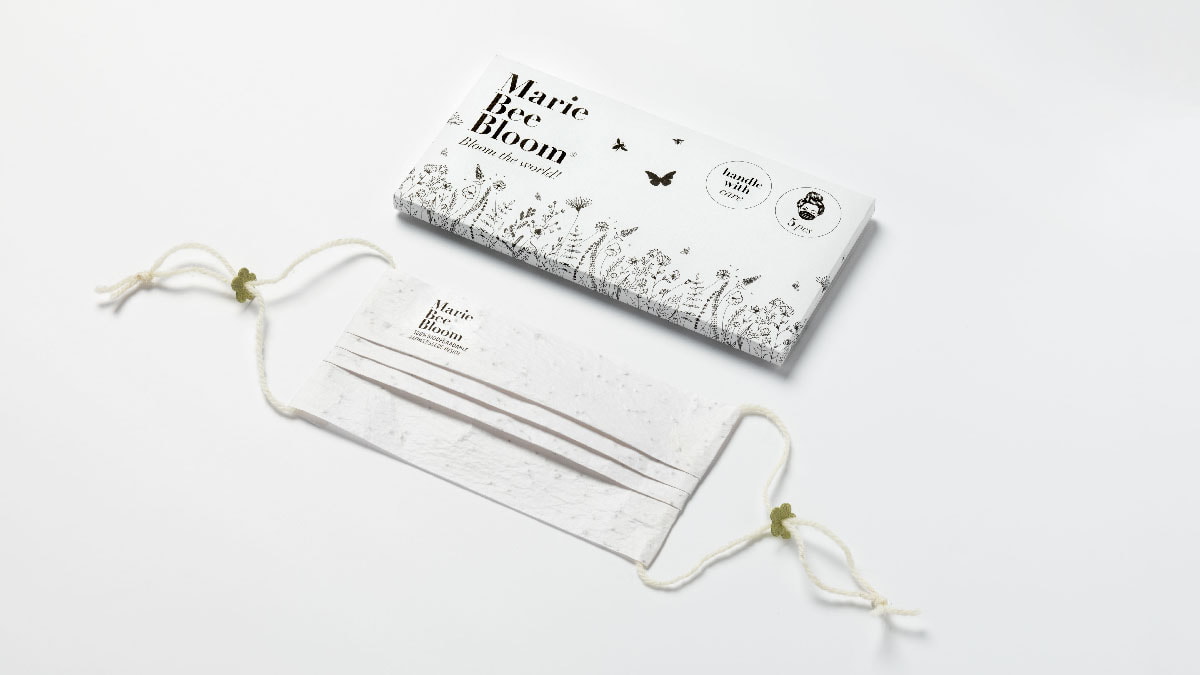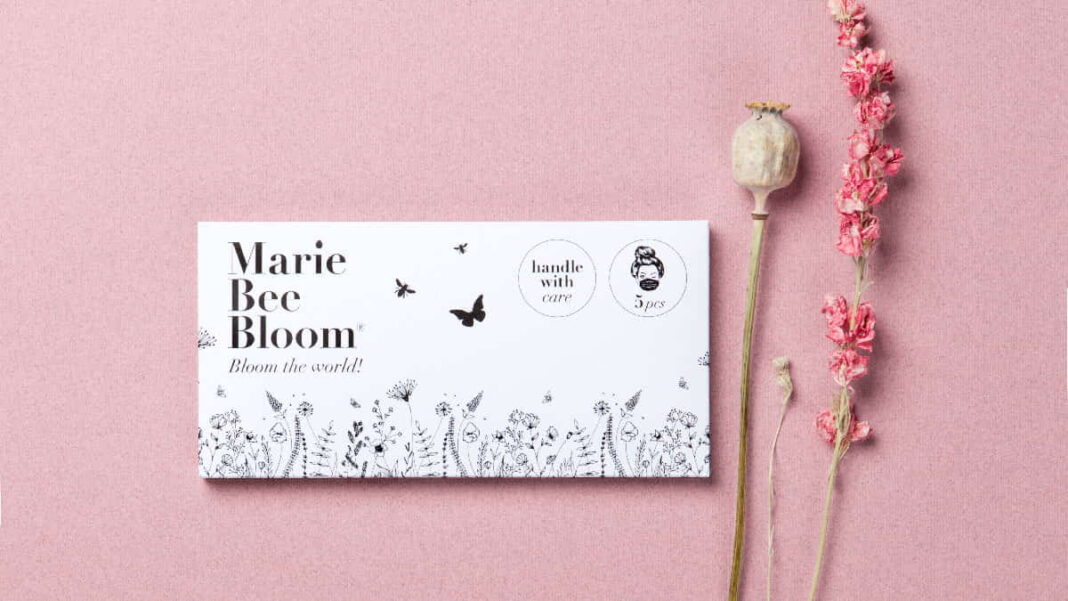The amount of single-use plastic masks in the oceans and the world is increasing day by day since the Covid-19 pandemic. Mask, one of the most important tools for protection from the virus, also pollutes the environment because it contains plastic. Littered masks and gloves end up in the streets, in rivers, on beaches, along coasts and in the sea and experts warn that fish and birds can ingest soft and flexible plastics. Marie Bee Bloom offers an environmentally friendly alternative to the users with the 100 percent biodegradable mask they designed.
The graphic designer of Pons Ontwerp visual communications in Utrecht, Netherlands and initiator of Marie Bee Bloom, Marianne de Groot-Pons tells that she has also polluted the world with her print and packaging designs during all the years she has been working as a graphic designer, and therefore she wants to do something back for the world. Groot-Pons says; “After stumbling for weeks over all the blue disposable masks on the street, I woke up one morning with the idea of a biodegradable mask with flower seeds inside”.
All materials used in mask are environmentally friendly
Rice paper filled with flower seeds (asters, cornflower, coreopsis, gilia, gypsophila, dill) is used in the production of the biodegradable mask. While the cords of the mask, produced in a Dutch sheltered workshop, are obtained from pure sheep wool, it is stated that this wool is machine-spun in Sweden, as the Netherlands no longer has a spinning mill. There are small flowers on the cords so that they can be adjusted to the desired size. While these are made from vegetable egg cartons, only potato starch and water-based glue are used to attach the cords to the mask. In addition, the ink of the stamped logo on the mask is also biodegradable. It is stated that this untested mask protects as well as homemade fabric masks. Marie Bee Bloom is currently shipping masks to all European Union countries and is expected to start serving the rest of the world in a short time.

Which one is first, the environmental impact of mask or its protection?
Marianne de Groot-Pons also says she wants to bring back into the spotlight the issue of ‘banning single-use plastic from July 1, 2021’. While the SUP (Single-Use Plastic) Directive published by the EU Commission does not cover personal protective equipment, such as single-use face masks or gloves that have increased in use and litter in the environment, due to efforts to combat the Covid-19 pandemic. Besides, such wastes fall under more general provisions of EU waste legislation, which require proper waste management and prohibit littering. It is stated that studies comparing the environmental and climate effects of disposable and reusable face masks are carried out in the article titled ‘Impacts of COVID-19 on single-use plastic in Europe’s environment’ published by the European Environment Agency. It is noted that the performance of personal protective equipment should always be the primary consideration while underlining that these studies do not take into account the functionality or effectiveness of reusable masks in preventing the spread of the virus or complying with WHO guidelines.
Allison et al and Schmutz et al performed simplified life cycle assessment studies, comparing the environmental impacts of single-use (surgical face mask made of polypropylene) and reusable masks (two-layered cotton face mask) in 2020. Accordingly, it was revealed that the material composition and production process dominate the impact of both mask types on the climate, whereas waste incineration made a minor contribution, while the transportation factor was not included in this study. It is stated that increasing the number of reuses of the cotton mask improves its environmental performance and that if reusable masks are hand-washed, the impact of washing becomes significant and the overall environmental impact may flip in favour of single-use masks.
In addition, it is remarked that discarded face masks and gloves can break into smaller pieces under the influence of weathering, ultraviolet radiation and abrasion, causing microplastic pollution, and microplastics can be released from the degradation of the outer layer (polypropylene) and inner layer (polyethylene) fabrics that make up single-use face masks.
